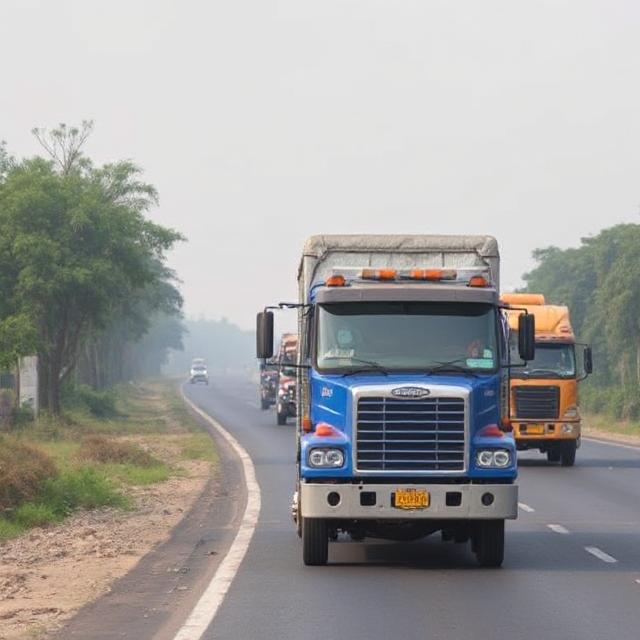Discover how India’s road network evolved from basic rural paths to world-class expressways. Explore key milestones, infrastructure projects, and the impact on connectivity and economic growth.
The Evolution of India’s Roads and Highways: From Local Routes to Expressways
India’s roadways have come a long way—from dusty village trails and congested city lanes to some of the most modern expressways in the world. This transformation is not just a story of concrete and asphalt, but a powerful narrative of progress, innovation, and national development.
In this post, we take a journey through time to understand the evolution of India’s roads and highways, the policies that shaped them, and their critical role in India’s economic and social transformation.
🛣️ Ancient Beginnings: Roads in Early India
Long before expressways and toll booths, India had a robust road system in ancient times:
- Mauryan Empire (3rd century BCE): Roads were maintained for administrative and military purposes.
- Ashoka’s Reign: Rest houses, milestones, and shade trees were introduced.
- Mughal Period: Grand Trunk Road (GT Road), connecting present-day Bangladesh to Afghanistan, was a major artery for trade and administration.
These early roads laid the groundwork for regional connectivity, albeit with limited scope and poor technology.
🛤️ Colonial India: Roads as a Tool of Control
During British rule, roads were developed primarily to extract resources and control territory:
- Military roads and trade routes were prioritized.
- Little investment went into rural roads or national connectivity.
- By independence (1947), India had around 400,000 km of roads, most of them unpaved.
🚧 Post-Independence Era: The Birth of National Planning
After independence, India focused on planned economic development, and roads became a key part of Five-Year Plans:
- 1950s–1970s: Rural roads under community development programs
- 1988: Formation of the National Highways Authority of India (NHAI)
- 1990s: Start of liberalization and the need for better logistics infrastructure
🛣️ Modern Highway Projects: Building the Backbone
1. Golden Quadrilateral (GQ) – Early 2000s
- A 5,846 km network connecting Delhi, Mumbai, Chennai, and Kolkata
- Reduced travel time, boosted intercity trade, and set new standards for highway quality
2. North-South & East-West Corridors
- Linked major economic zones across the length and breadth of India
These initiatives significantly upgraded India’s road quality, safety standards, and traffic capacity.
🚀 Expressways and Economic Corridors: A New Era
India is now shifting from basic highways to world-class expressways:
Key Examples:
- Delhi–Mumbai Expressway (DME): 1,386 km; India’s longest expressway
- Purvanchal Expressway (Uttar Pradesh) and Samruddhi Mahamarg (Maharashtra)
- Dedicated Freight Corridors (Rail & Road): For industrial logistics and cargo efficiency
Government Programs Driving Change:
- Bharatmala Pariyojana: Holistic infrastructure planning with 65,000+ km of highways
- PM Gati Shakti: Digital integration of roads, railways, ports, and logistics hubs
📈 Impact on Connectivity and Economic Growth
The evolution of India’s road network has had massive ripple effects:
- Faster goods movement and reduced logistics costs
- Improved access to rural markets and healthcare
- Boost in e-commerce, tourism, and job creation
- Urban-rural mobility and economic decentralization
India now boasts over 6.3 million kilometers of roadways—second only to the USA.
⚙️ The Road Ahead: Smart Roads and Green Infrastructure
India’s road development continues with an eye on the future:
- Smart highways with real-time traffic monitoring
- EV-compatible expressways with charging stations
- Eco-friendly construction materials and green corridors
- Public-Private Partnerships (PPPs) for faster project delivery
🧾 Conclusion
India’s roads have evolved from ancient stone paths to cutting-edge expressways that rival global standards. This journey mirrors the country’s transition from an agrarian society to a fast-growing economic powerhouse.
As new technologies and sustainability practices take center stage, the next chapter in India’s road evolution promises even smarter, greener, and more inclusive transportation for generations to come.
Keywords:
- evolution of Indian highways
- history of roads in India
- expressway development in India
- Indian road network growth
- national highway infrastructure
- Bharatmala Pariyojana
- Golden Quadrilateral
- rural to expressway transformation

